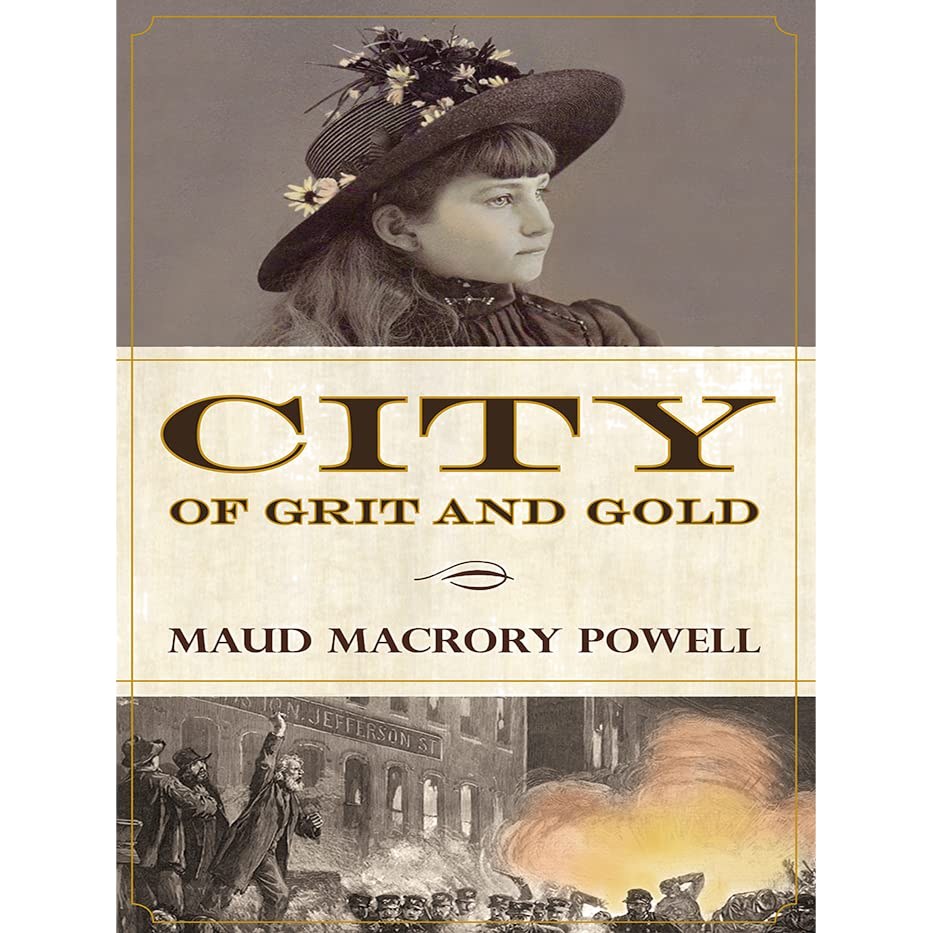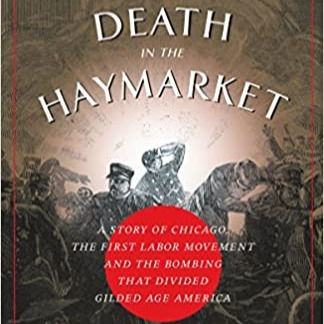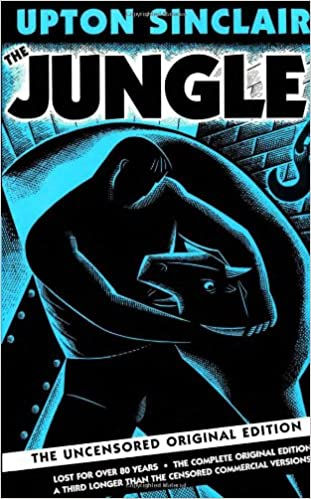
4 May 1886: Haymarket Riot in Chicago, as violence erupts between police and labor movement protesters
City of Grit and Gold
by Maud Macrory Powell
Novel/Historical
139 pages
Allium Press of Chicago
Recommended for: Dialectic students
This novel is a rare treasure! I love when I find books about important events in history that deserve to have their story told. The Haymarket Riot is just such an event and one that has not been given attention even in adult publishing. Not only does Ms. Powell bring this event to life, she makes it revolve around a protagonist who will be relatable to her target audience: a twelve year old girl named Addie.
Addie is a child of Jewish immigrants, caught between family members who feel very differently about the rising tide of labor protesters. Feeling that immigrants should be thankful to live in a country where a man can work hard and support his family in peace, Addie's father, a milliner, wants nothing more than to live his life and stay out of the drama. Addie's respect for her father's opinion is complicated by her opposing love for her Uncle Chaim, who is actively involved in the labor movement.
In bringing the laborers' rights issues into Addie's family, Ms. Powell makes them more intimate for her young readers. Which young person has not seen and heard members of their own family debating current hot-button topics? By crafting her plot in this way, issues that the readers might not be familiar with are put in a context where they can be understood. Readers become aware of the fact that safe working conditions, an eight hour work day, and child labor laws are rights that came only after a fight and often at a high cost. Learning through Addie's eyes that not all children, even young ones, were able to attend school and were instead required to work long hours in dangerous conditions is impactful for young readers, especially those who complain about school.
Many of the issues in the novel are ones that still linger today and are likely discussed in the readers' own homes. While the fair and safe labor practices that were the biggest goals of the Haymarket protesters are now the law--illustrating for young readers the potential for individual citizens to band together and affect change--other issues such as the struggle to make a living wage, immigration, and police brutality are still unfortunate realities even today.
Ms. Powell does not shy away from the ugly side of protest and organized labor. Central to the plot of book is the fact that a bomb, thrown by an unknown protesters, killed or grievously injured more than sixty police officers. By including the incident, a door is opened to the discussion of where to draw the line in a fight. Can any measures, no matter how egregious, be justified to achieve your aims? Where do you draw the line? How do you know when the cost is higher than the value of that for which you are fighting?
This is a fantastic book to add to the lineup for any modern history study for Dialectic students and could also be considered for Rhetoric lists or adults how want to know more about the issues addressed in the novel.

To my knowledge, outside of academic publishing, there is only one nonfiction book on this topic--for adults, Death in the Haymarket by James R. Green, which was published by Pantheon and received positive reviews but did not get widespread attention. It is included on the Rhetoric list for those students who are interested in the labor movement. Mr. Green uses as his thesis the fact that these events played out during the Gilded Age, a time when the excesses of a few was paid for by the inhumane treatment of the many. The bombing is central, with its debate of merit versus cost.

If you are seeking a novel for either a Rhetoric student or an adult, the seminal work on the labor movement is, of course, Upton Sinclair's The Jungle. It is also set in Chicago--but almost twenty years after the Haymarket Riot--and addresses many of the same issues as City of Grit and Gold. However, it is imperative to ensure that the copy you read is labeled "uncensored" and "original edition." Books that are labeled as "unabridged" are NOT the same thing. As was common at the time, the original was published in serial form, but Sinclair was unable to find a house willing to publish the highly controversial complete manuscript. It was not until the 1980s that the original manuscript was discovered and rereleased in its entirety with all 36 of the original chapters. Editions from prior to that only have 31 chapters, and almost all details of the foul meat-packing industry practices and ethnic tensions--as well as Sinclair's political and social commentary--have been edited out.

Comments